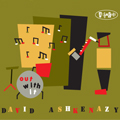 By Martin Gladu
By Martin Gladu
The jazz drumming tradition abounds in models for emulation and study, and two such models stand out in importance. For its sheer power, Elvin Jones’ work with saxophonist John Coltrane imposes itself on any serious student of the drum set. The other would be Paul Motian whose oblique, deconstructivist approach appears liberated of such notions as how many beats there are to the bar or how many bars there are in the tune.
A free spirit, Motian is one of the most economical drummers there is. Light and sparse, his stick work rarely—if never—gets in the soloist’s way. Surprisingly, many players affirm his is a professorial type of support (AAJ’s interview with pianist Anat Fort is a fascinating read for those looking to learn more about Motian’s approach to recording). Motian’s style could compare to that of a choreographer who sets dancers in space and helps them pace their movements. Jones, on the other hand, typifies the blue-collar spirit of his Motor City roots. A relentless dynamo who engulfs soloists with a wall of sounds and carries them as would a benign tsunami, his style would compare more to a locomotive chugging away; only those able to bear the heat produced by the pumping machinery can get aboard. Though both drummers prefer more conversational styles over the traditional time-keeper role, their penetrating interjections never result in the colloquy sounding cacophonous. Which raises the question, how do they achieve such balance?
While there is no simple answer, one could argue that as assertive as their respective playing may be, neither will force ideas not fitting the moment, which necessarily implies refraining from cutting through a soloist’s discourse. They do however complement, re-organize, exaggerate, orchestrate, engage, deconstruct and play around fragments of the soloist’s ideas. In simple terms, “playing with” the band rather than “playing over” them. This requires a deep level of listening and also having the modesty to not overplay.
A pupil of Joe LaBarbera, Kenny Washington and Peter Erskine, David Ashkenazy’s education is certainly impressive. LaBarbera was pianist Bill Evans’ last drummer; Erskine epitomizes the idea of tasteful drumming; and Washington is a trusted veteran well-versed in both the traditional and modern sensibilities. For his part, the 31-year old drummer David Ashkenazy has been paying his dues in both the Los Angeles and New York City scenes since the early 2000s, supporting the likes of guitarist Mike Moreno, trombone Alan Ferber, saxophonist Rickey Woodard, trumpeter Ron Stout and saxophonist extraordinaire Bob Sheppard. For this recording, he calls upon saxophonist Joel Frahm, organist Gary Versace and guitarist Gilad Hekselman to light up a mixed program of standards, covers, and original compositions.
Considering he acquired most his professional experience playing with contemporaries possessing more or less the same credentials as he, Ashkenazy has nevertheless forged himself quite a trenchant style. That said, a certain immaturity shadows this notable achievement.
Prone to overplay and lose what one would call musical perspective, his hyperactive and somewhat over-enthusiastic comping creates situations analogous to crosstalk. In clear, reacting to soloists’ rhythmic ideas and repeating them verbatim not only disrupts the band’s momentum and overall sonic balance, but it diverts the listener’s attention from the soloist’s melodic delivery. In fact, during climax-building moments—such as the pedal point sections of “Too Young To Go Steady” or the bi-chordal parts of Wayne Shorter’s “Children Of The Night”—such repeated figures do indeed help build tension; but, in excess, they rupture the syntactic continuum. More, Ashkenazy often favours triplet-based figures and coarsely textured fills, which has the effect of upsetting the music’s flow and, ultimately, of saturating it. The music would definitely gain from airier and more subtle accompaniments.
Versace, for his part, shines throughout the album. His brilliant solo on the Shorter piece being yet another evidence of his ability to construct a perfect solo in any circumstances. With Hekselman’s buzzing, slightly overdriven tone, Versace’s B3 playing broadens the dynamic reach of the group and adds a welcome dose of grit.
Arguably the strongest piece herein, the syncopated, two-feel take of Jimmy McHugh’s classic “Too Young To Go Steady” is reminiscent of guitarist John Abercrombie’s work with keyboardist Dan Wall and drummer Adam Nussbaum. On such relaxed jaunts, this group proves a most joyful listening experience. With its rubato chord-melody introduction and mid-tempo, Latin feel, “Bokserboym” also plays well despite Ashkenazy’s chatty snare work.
Besides such minor performance flaws, Out With It reveals its leader’s knack for picking interesting material and presenting it in a gripping way. With time, Ashkenazy will harvest the fruits this winning formula has to offer.
Tracks: Children Of The Night; Dadi-Yo; Simone; I Want You; Bokserboyn; Zoology; Strange Meeting; Too Young To Go Steady.
Personnel: David Ashkenazy: drums; Joel Frahm: saxophone; Gary Versace: organ; Gilad Hekselman: guitar.
 David Ashkenazy/ Out With It (Posi-Tone): While the version “I Want You” here is an intense tour de force, David Ashkenazy and company jump right into action on this album with ad adventurous run through of Wayne Shorter’s “Children of the Night.” Covering Stephen Foster as well as Lennon/McCartney is further testament to an element of courage that permeates this entire effort. The inclusion of Beatles material lives up to its durability and flexibility as well as its mainstream fame, during instrumental arrangements develop their own character.
David Ashkenazy/ Out With It (Posi-Tone): While the version “I Want You” here is an intense tour de force, David Ashkenazy and company jump right into action on this album with ad adventurous run through of Wayne Shorter’s “Children of the Night.” Covering Stephen Foster as well as Lennon/McCartney is further testament to an element of courage that permeates this entire effort. The inclusion of Beatles material lives up to its durability and flexibility as well as its mainstream fame, during instrumental arrangements develop their own character.